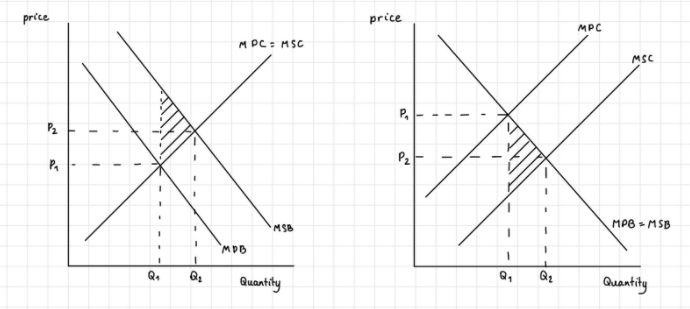Merit Goods
Written by Togzhan Batyrbekova
Merit goods are goods that are considered socially desirable. In other words, they are goods the consumption of which has external benefits, which are benefits to the third party. Some examples of merit goods are education and vaccination. Let’s analyze why:
When a student attends school and furthers their education, they get the private benefit of having a good education, allowing them to attend better universities, get a better degree, get a better job, and so on. But there is also an external benefit to the society of them doing so. For example, thanks to this education, the student may go on to become a doctor, who will then save lives, or a researcher who may find a cure to some disease. Thus, education won’t only benefit the student, but the society in general.
The same idea goes for vaccinations. When getting vaccinated, you get the private benefit of not getting sick, improving your overall quality of life, and its longevity. However, there is also the external benefit of you getting vaccinated in that you won’t be able to get someone else sick.
Merit goods are very beneficial to society, however, they can be undersupplied in a free market. For example, if healthcare was only provided by private firms, it would only be supplied to those who can afford it. That is not something we want, and therefore, in a mixed economy, merit goods are often provided by the government.
The idea of merit goods can be illustrated using positive externality diagrams:
The diagrams above represent 2 situations of merit goods. As you can see, they are very similar to demand-supply diagrams, only their labels are different. MPC and MSC stand for marginal private benefit and marginal social benefit respectively and replace supply on the diagram. This is because they represent the cost of producing/ supplying a good or service. Demand is replaced by MPB and MSB, which stand for marginal private benefit and marginal social benefit. They replace demand because they represent the benefit of consuming a good or service. Now let’s analyze the diagrams:
The diagram on the left shows a situation where the MSB (marginal social benefit) is higher than the MPB (marginal private benefit). What this means, is that the social benefit of using the good or service is higher than the private benefit of doing so (e.g. Education). In other words, there is a positive externality or external benefit to consuming the good, making the good a merit good.
The diagram on the right shows a situation where the MPC(marginal private cost) is higher than the MSC (marginal social cost). This means that the private cost of supplying a good or service is higher than the social cost of doing so (e.g. supplying vaccines). This means that there is an external benefit to supplying a good or service, making it merit good.
In a free market, these goods would be consumed at P1Q1, because consumers and producers only take into account personal gain or cost, without considering that to society. Remember, one seeks to maximize profit, while the other seeks to maximize utility. However, if the external benefit was considered, the goods would be consumed at P2Q2- at a higher price and a higher quantity in the first diagram and a lower cost and higher quantity in the second. These points are the social optimum. The difference between the P1Q1 and P2Q2 is the welfare gain, which is the gain of benefit to society, represented by the shaded triangle.
